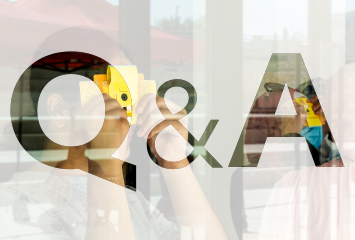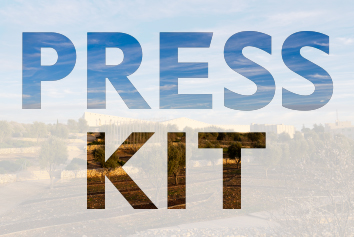What is the Palestinian Museum?
The Palestinian Museum - Non-Governmental Association dedicated to supporting an open and dynamic Palestinian culture nationally and internationally. The Museum presents and engages with new perspectives on Palestinian history, society and culture. It also offers spaces for creative ventures, educational programmes and innovative research.
What is the Museum’s Vision and Values?
OUR VISION
A vital and sustainable Palestinian museum culture
OUR MISSION
A vibrant museum producing and disseminating creative and emancipatory learning experiences and narratives to the world about Palestine, its people, and its histories, while empowering Palestinians and their communities.
GOAL I
Tangible and intangible Palestinian cultural heritage is documented, protected, promoted, and made accessible to local communities and wider audiences to enhance resilience under occupation, connect fragmented communities, and enhance global recognition of Palestinian heritage, identities, and futurity.
GOAL II
Produce and deliver inspiring interactive learning experiences to growing and more diverse audiences.
GOAL III
Expand the Palestinian Museum networks and partnerships and increase community engagement and transnational solidarity.
GOAL IV
A vibrant organization that manages its own resources efficiently and sustainably.
VALUES
- Inclusivity: The Palestinian Museum builds partnerships and bolsters Palestinian communities wherever they are
- Excellence: The Palestinian Museum produces verifiably accurate content
- Creativity and Innovation:The Palestinian Museum presents novel tools and concepts as well as innovative content across all its platforms
- Transparency: The Palestinian Museum is accountable to society and strives to maintain its trust
- Independence: The Palestinian Museum is an independent institution with no political affiliations
- Inspiration: The Palestinian Museum is a source of hope for a free Palestinian future
Where is the Palestinian Museum located?
The Museum is located in Birzeit, Palestine adjacent to the Birzeit University campus, seven kilometres north of Ramallah and 25 kilometres north of the occupied city of Jerusalem.
How large is the Museum?
The Museum stands on a 40,000 square metre plot of land and is being built in two phases. Phase 1, which completed in 2016, comprises 3,500 square metres of exhibition, educational and administrative space. Phase 2, which will be twice as large, will be developed over the following years.
Why was Birzeit chosen as the Palestinian Museum’s location?
- Birzeit University generously offered the Museum a 40,000 square metre plot of land on a very long lease to build the Palestinian Museum.
- Birzeit is located at the centre of the Occupied West Bank. The land also overlooks the Mediterranean from the West and its landscape is particularly attractive.
- The university’s facilities will help the Museum fulfil its aspiration to become a leading centre for research.
- This will also help develop long-term collaboration between the Museum and the university’s scholars and students.
- Pre-existing roads and services infrastructure facilitated construction.
Why was the Museum not built in Jerusalem?
When we launched the project, the intention was to build the Museum in Jerusalem, but that was not a straightforward possibility because of the severe restrictions placed by the Israeli occupying forces on Palestinians building anything inside the city, in addition to the impediments on the movement of Palestinians between their towns and villages, most notably the Separation Wall and numerous checkpoints. Moreover, the vast majority of Palestinian ID holders are unable to access the city. Nonetheless, it is the Palestinian Museum’s intention to create a Jerusalem branch and/or a partnership with an existing cultural institution in the city as soon as it becomes viable to do so.
How will Museum overcome the impediments that prevent people from reaching it?
The Palestinian Museum was designed as a transnational institution which can overcome geographical and political boundaries and reach Palestinians both within historic Palestine and outside through its digital collections and online platforms, and its network of local and international partnerships which will allow for the sharing of skills, resources, programmes and exhibitions.
How did the idea for the Museum come about?
In 1997, members of Taawon-Welfare Association wanted to create a museum dedicated to the memory of the Nakba in order to document the catastrophe that shaped the history of modern Palestine as a result of the expulsion from their homeland of more than 60percent of the country’s Arab inhabitants. With time, however, this idea evolved so that the Museum no longer only focusses on the Nakba, but is now planned as an institution that can celebrate Palestine’s culture more broadly. The Museum aims to do this through a series of innovative and creative programmes that will allow its audience to also reflect on the present in order to imagine a better future.
Who is the Taawon-Welfare Association?
Taawon-Welfare Association is an independent, not-for-profit organisation dedicated to supporting the developmental and humanistic needs of the Palestinians in the West Bank, Jerusalem, the Gaza Strip, the Palestinian communities inside the Green Line and among the refugee communities in Lebanon.
How is the Palestinian Museum funded?
A significant percentage of the Museum’s funding comes from members of Taawon-Welfare Association, in addition to friends and institutional supporters in the Arab region and beyond.
Who designed the Museum?
The Museum was designed by Heneghan Peng, an award-winning firm based in Dublin, who were selected by a jury of independent and Taawon-Welfare Association members following an international design competition held in 2011.
The shortlist included firms from Canada, Denmark, the UK and the late Palestinian architect, Jaafar Tuqan.
Every element of the landscape of Palestine tells a story of intervention, production, culture, environment and commerce. Embedded in its terraces is this rich and very particular history. The approach to the Palestinian Museum design was to draw on this history, placing the Museum building into its immediate site yet drawing from this site to tell a larger story of a highly diverse culture.
The masterplan organised the site in terraces following the formal language of the landscape. The contours were structured to be recognisable yet follow the natural points of the site. It is a flexible concept in that the precise geometry of the contours can adapt as circumstances change while its overall coherence remains intact.
Why was this concept design chosen?
For its simplicity and the elegant, seamless manner in which it blended the building into its surrounding landscape, particularly the traditional terraces of the West Bank.
What is special about the Museum’s gardens?
Palestine has a rich and diverse native flora and a wide range of adopted plants. Its landscape has been shaped by both its native plants and also by horticultural traditions that are not necessarily native to the region but have become embedded in it over time and contributed to its culture. The story of these influences is represented in the Palestinian Museum gardens, where the narrative is shaped by the contrasting themes of the “natural landscape” and the “cultural landscape”. That dynamic is ever-present as one moves through the gardens up to the building, or from nature to culture…
The gardens were designed by Jordanian landscape architect Lara Zureikat.
Who built the Museum?
The Museum was built by Palestinian contracting and project management companies that were established in exile but have returned to Palestine. These included the Consolidated Contracting Company (CCC) and Projacs International, in addition to local sub-contractors such as Tubeileh Engineering & Contracting Company, supervising architects ArabTech Jardaneh (Palestine), Mirage Electronics, Al-Sabaa Nurseries and Mada Daman, all of whom were able to benefit from this unique professional opportunity for Palestine.
What is a “green building”?
The Palestinian Museum holds the gold certificate of the Leadership in Energy and Environmental Design (LEED)
from the U.S. Green Building Council.
Energy-saving measures helps the Museum save 15% of its annual energy consumption and 48% of its water consumption. These levels are considered high by international standards.
What will the Museum have in it?
Defying convention, the Museum will launch without a collection. Its programming will rely on touring exhibitions and a state-of-the-art digital and interactive platform. Its permanent collection will then gradually be built over time.
What does the Museum’s logo signify?
Shaped like a speech bubble and designed by Venturethree in London and by award-winning Lebanese typographer Nadine Shaheen, the Museum’s logo reflects its ambition to host continuous conversations with its audiences and encourage members of those audiences to connect among themselves.
The logo has won numerous awards including ‘Best Logo’ at the International Design and Communication Awards in Sydney (IDCA) 2014, in which museums from 17 countries took part. That year it also won ‘Best Corporate Identity’ (Typography/Logotypes/Brandmarks) in a competition organised by the International Society of Typographic Designers (ISTD) in Britain.
From dream to reality…
The Palestinian Museum is a dream come true, built by Palestinian hands on the land of Palestine, a cultural beacon which connects Palestinians wherever they happen to be, inside and outside their homeland.
For further press enquiries, please write to media@palmuseum.org

